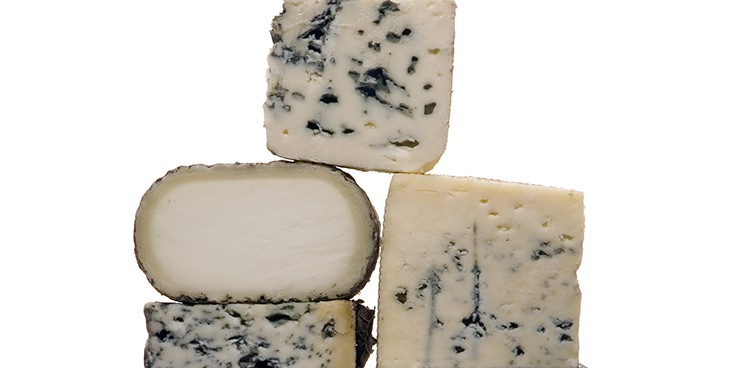
Most cheesemaking starts with the fermentation of milk, then proceeds with enzymatic changes that alter and degrade the raw material, breaking down fats and proteins into molecules that can be strange-smelling or stinky. So sniffing a questionable piece of cheese isn’t like sniffing spoiled milk; you might not know immediately if something’s off. Instead, you’ll need to play detective using multiple senses.
Look for visual cues such as an extra slimy surface; dark, dry, and cracked areas in a hard cheese; or yellow splotches on a blue cheese (remember, unintended mold doesn’t necessarily mean the entire wheel is done for). If the cheese is unopened, bloated packaging can also be an indicator. If you smell ammonia, this suggests that a cheese may have been wrapped up too long and was unable to breathe—it doesn’t necessarily mean the cheese has gone bad.
Still unsure? Nibble the cheese to reach a final verdict; if it’s abnormally sour or just plain off-tasting, it’s past prime.




